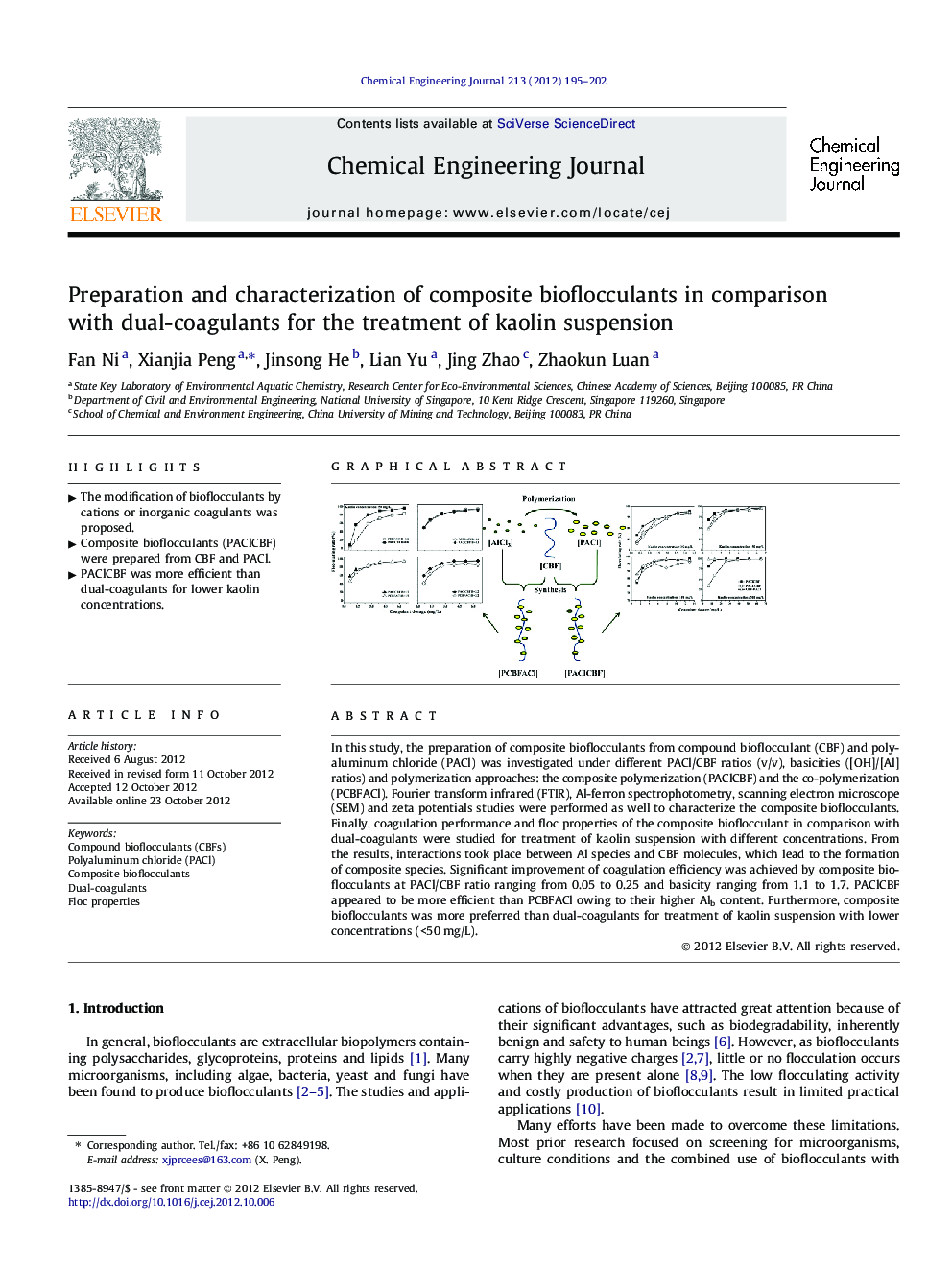| Article ID | Journal | Published Year | Pages | File Type |
|---|---|---|---|---|
| 149097 | Chemical Engineering Journal | 2012 | 8 Pages |
In this study, the preparation of composite bioflocculants from compound bioflocculant (CBF) and polyaluminum chloride (PACl) was investigated under different PACl/CBF ratios (v/v), basicities ([OH]/[Al] ratios) and polymerization approaches: the composite polymerization (PAClCBF) and the co-polymerization (PCBFACl). Fourier transform infrared (FTIR), Al-ferron spectrophotometry, scanning electron microscope (SEM) and zeta potentials studies were performed as well to characterize the composite bioflocculants. Finally, coagulation performance and floc properties of the composite bioflocculant in comparison with dual-coagulants were studied for treatment of kaolin suspension with different concentrations. From the results, interactions took place between Al species and CBF molecules, which lead to the formation of composite species. Significant improvement of coagulation efficiency was achieved by composite bioflocculants at PACl/CBF ratio ranging from 0.05 to 0.25 and basicity ranging from 1.1 to 1.7. PAClCBF appeared to be more efficient than PCBFACl owing to their higher Alb content. Furthermore, composite bioflocculants was more preferred than dual-coagulants for treatment of kaolin suspension with lower concentrations (<50 mg/L).
Graphical abstractFigure optionsDownload full-size imageDownload as PowerPoint slideHighlights► The modification of bioflocculants by cations or inorganic coagulants was proposed. ► Composite bioflocculants (PAClCBF) were prepared from CBF and PACl. ► PAClCBF was more efficient than dual-coagulants for lower kaolin concentrations.
